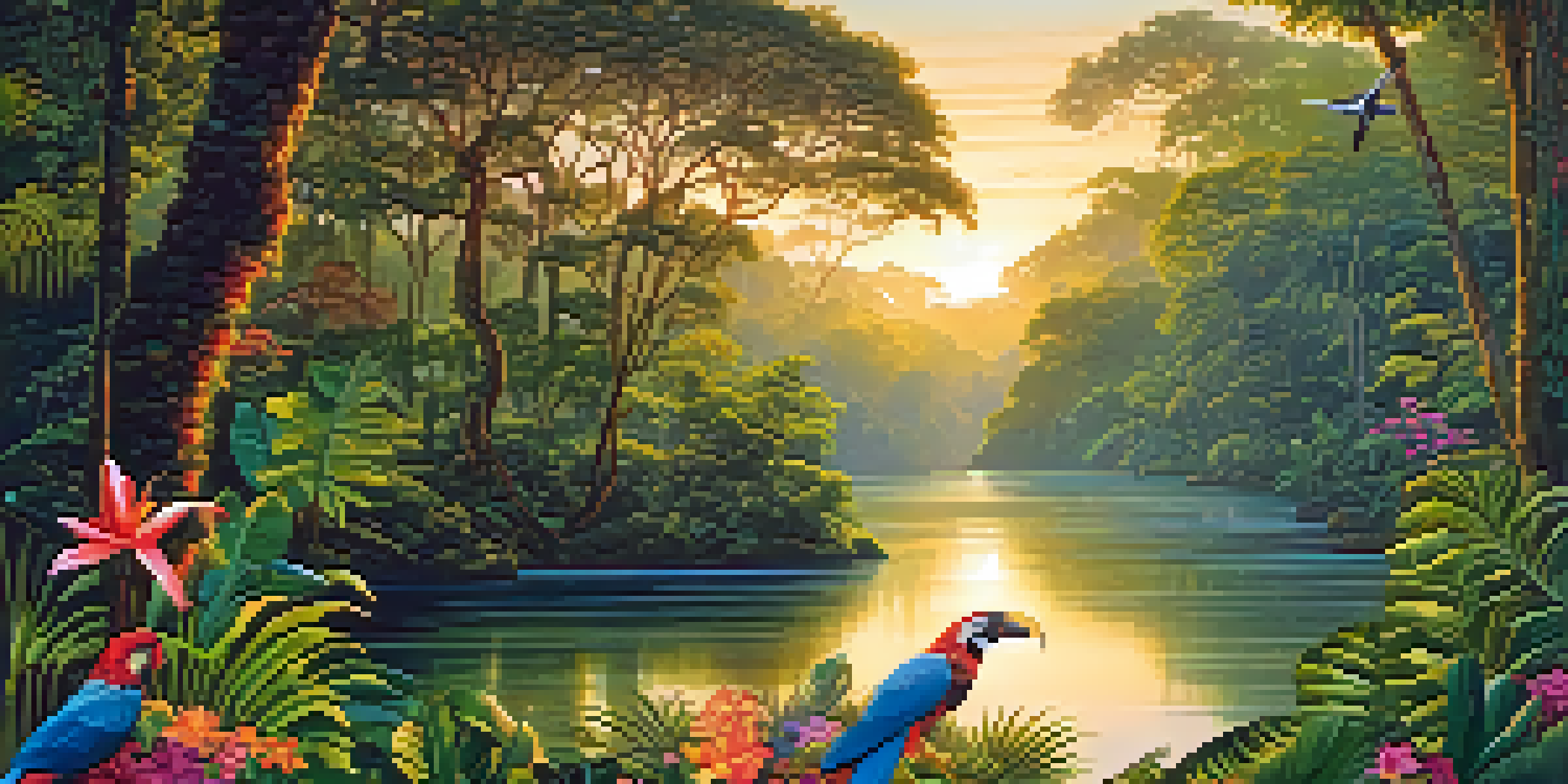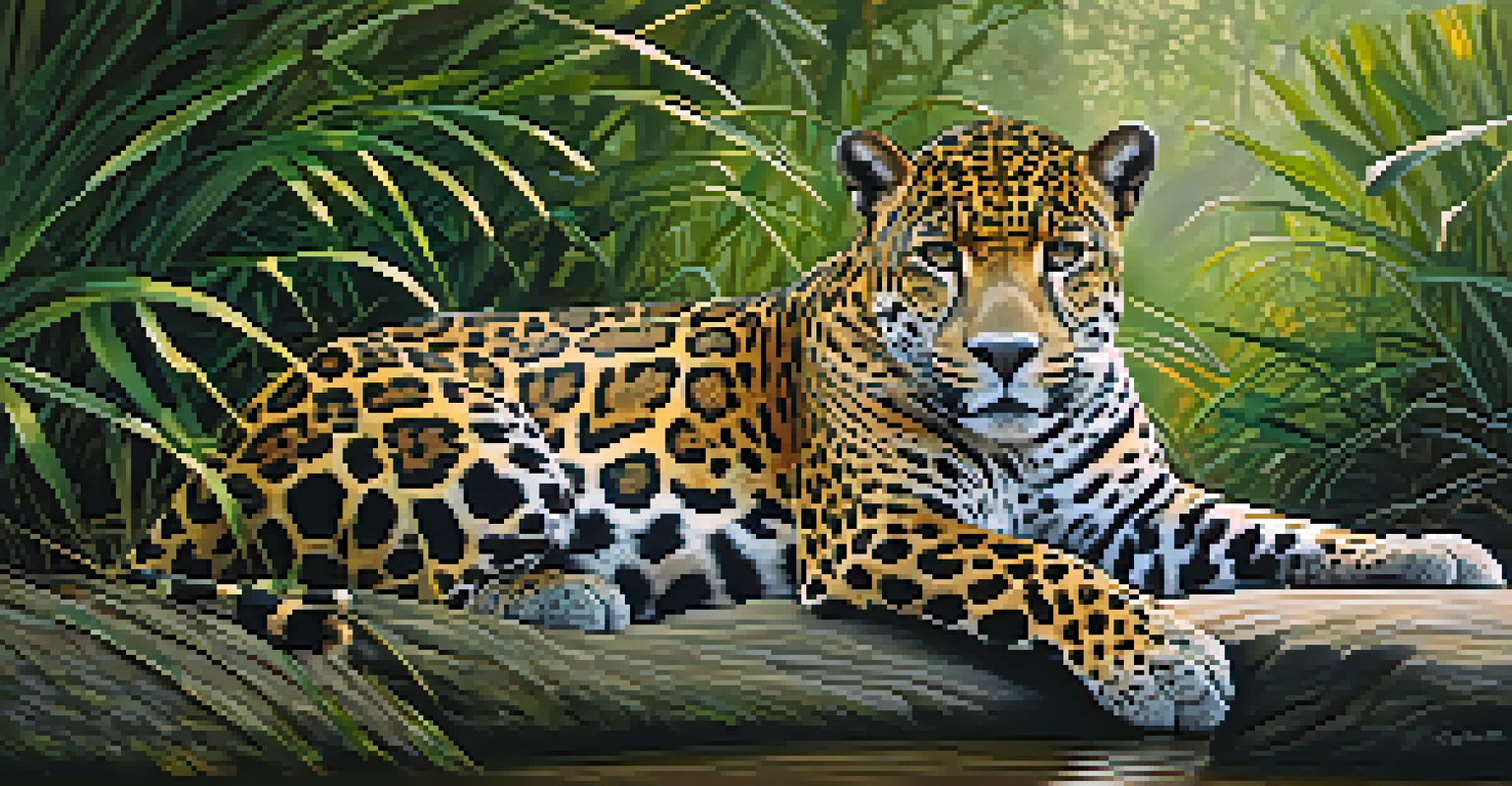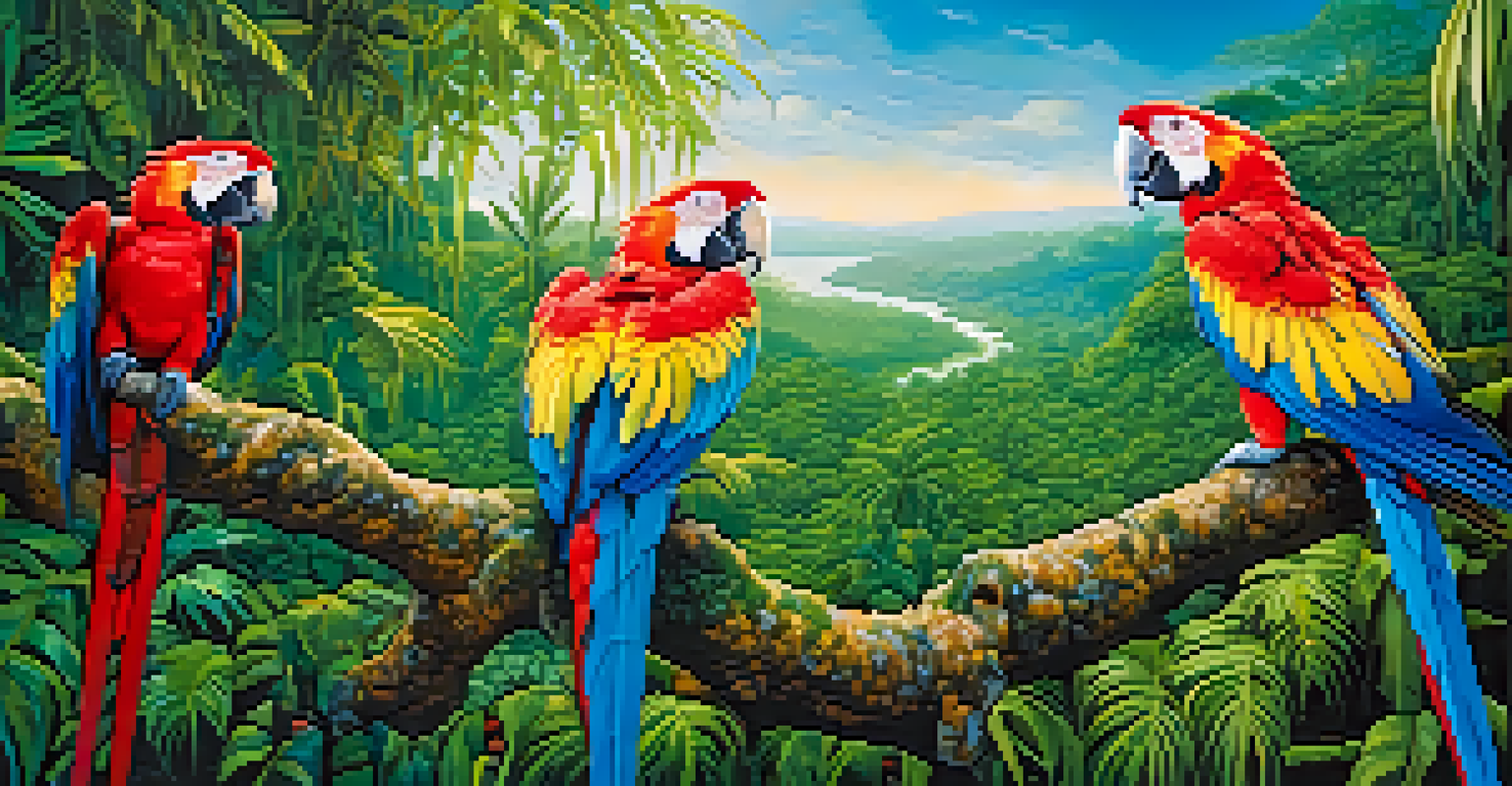The Ultimate Guide to Wildlife Safaris in Peru's Amazon

Discovering the Amazon: A Unique Ecosystem
The Amazon rainforest is a treasure trove of biodiversity, home to countless species of flora and fauna. This lush environment covers a vast area, offering a rich tapestry of ecosystems that are essential for wildlife. From towering trees to winding rivers, every corner of the Amazon holds the potential for incredible wildlife sightings.
The greatest threat to our planet is the belief that someone else will save it.
One of the most fascinating aspects of the Amazon is its sheer size and complexity. Spanning multiple countries, including Peru, it is the largest rainforest on Earth. This expansive habitat supports a variety of animals, from jaguars and sloths to vibrant birds like toucans and macaws, making it a prime location for wildlife enthusiasts.
When planning your safari, understanding the unique features of the Amazon is crucial. The diverse habitats range from flooded forests to dry uplands, each hosting different species. This variety makes every safari a new adventure, with opportunities to witness nature in all its glory.
Best Time to Visit the Amazon for Wildlife Safaris
Timing your visit to the Amazon can significantly enhance your wildlife safari experience. The dry season, which typically runs from May to October, is often considered the best time for wildlife viewing. During this period, the weather is more predictable, and animals are more likely to be active and visible as they seek food and water.

Conversely, the wet season from November to April brings its own unique charm. While heavy rains can make some areas inaccessible, the rainforest comes alive with vibrant greenery and a plethora of migratory birds. This period also marks the peak of amphibian and reptile activity, offering a different perspective on Amazonian wildlife.
Best Times for Amazon Safaris
Visiting during the dry season from May to October enhances wildlife visibility, while the wet season offers vibrant scenery and unique animal activity.
Ultimately, your choice depends on what animals you hope to see and the type of experience you desire. Whether you prefer the lush beauty of the wet season or the easier navigation of the dry months, both times offer unforgettable opportunities to connect with nature.
Choosing the Right Safari Tour in Peru
With numerous tour operators offering wildlife safaris in Peru's Amazon, choosing the right one can feel overwhelming. It's important to look for tours that prioritize sustainability and ethical wildlife viewing practices. Researching reviews and recommendations can help you find a tour that aligns with your values and expectations.
In every walk with nature, one receives far more than he seeks.
Consider the type of experience you’re looking for: do you want a guided tour with an expert naturalist, or would you prefer a more independent adventure? Some tours focus on specific wildlife sightings, while others offer a broader overview of the ecosystem. Tailoring your choice to your interests ensures a more fulfilling experience.
Lastly, pay attention to group sizes and the level of comfort provided. Smaller groups often allow for a more intimate experience with nature, while comfortable accommodations can enhance your overall enjoyment of the safari. Finding the right balance can make all the difference in your Amazon adventure.
Essential Gear for an Amazon Safari
Packing the right gear is essential for a successful wildlife safari in the Amazon. Comfortable, lightweight clothing that dries quickly is a must, as the humidity can be quite high. Opt for breathable fabrics that protect against insects and the sun while allowing for ease of movement during your explorations.
Don't forget to include sturdy waterproof footwear. Whether you're trekking through muddy trails or navigating riverbanks, appropriate footwear will keep you comfortable and safe. Additionally, a good pair of binoculars will enhance your wildlife viewing experience, allowing you to spot elusive creatures from a distance.
Choosing Sustainable Tours
Selecting eco-friendly safari tours that prioritize ethical wildlife practices ensures a responsible and enriching experience in the Amazon.
Finally, consider packing a small daypack with essentials like a water bottle, snacks, and a first-aid kit. Being prepared can make your safari more enjoyable and ensure you can focus on the incredible wildlife surrounding you.
Top Wildlife Species to Spot in the Amazon
The Amazon is renowned for its incredible wildlife, and certain species are must-sees during your safari. Jaguars, often dubbed the kings of the jungle, are elusive but can sometimes be spotted lounging on riverbanks or stealthily prowling through the underbrush. Their majestic presence is a highlight for many wildlife enthusiasts.
Don't overlook the vibrant birdlife, which includes hundreds of species, such as the resplendent quetzal and the striking harpy eagle. Birdwatching in the Amazon can be a rewarding experience, as the cacophony of calls fills the air and colorful feathers flit through the trees.
Other fascinating creatures include the playful pink river dolphins, capybaras, and various species of monkeys. Each safari offers a chance to encounter these animals in their natural habitat, making every outing a new and exciting adventure.
Cultural Encounters: Indigenous Communities in the Amazon
While the wildlife is a major draw, the Amazon is also rich in cultural heritage. Many tours incorporate visits to indigenous communities, allowing travelers to learn about their traditions and ways of life. Engaging with local cultures adds a new dimension to your safari experience.
These communities often have deep connections to the rainforest, utilizing its resources sustainably and preserving their ancestral knowledge. By visiting, you can gain insight into their customs, crafts, and the challenges they face due to environmental changes.
Spotting Unique Wildlife
The Amazon is home to iconic species like jaguars and colorful birds, making each safari an opportunity for unforgettable wildlife encounters.
Supporting these communities through responsible tourism can make a positive impact. Choose tours that respect local cultures and contribute to their well-being, ensuring that your adventure benefits both wildlife and the people who call the Amazon home.
Conservation Efforts in the Amazon Rainforest
Conservation is a critical issue in the Amazon, as deforestation and habitat loss threaten its biodiversity. Many organizations are working tirelessly to protect this unique ecosystem, and as a traveler, you can play a role in these efforts. Choosing eco-friendly tours that support conservation projects helps ensure the Amazon's preservation.
On your safari, you may encounter initiatives aimed at restoring habitats or protecting endangered species. Understanding these efforts can deepen your appreciation for the land and its inhabitants, fostering a sense of responsibility towards environmental stewardship.

By combining adventure with advocacy, your wildlife safari can contribute to a greater cause. Educating yourself about these initiatives allows you to be a more informed traveler and engage in meaningful conversations about conservation.